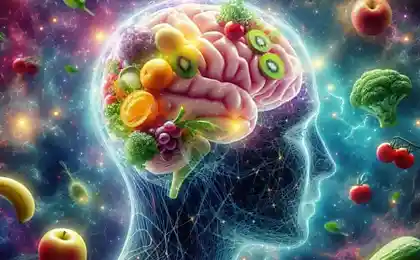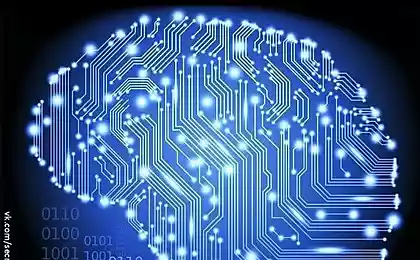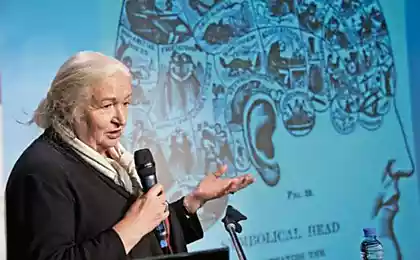455
Decoding thoughts: 6 scientific studies on the mechanisms of thinking

© Barnaby Barford
How does voobrazheniya, along with romantic love, leads the list of the most mythologized mechanisms of the human brain. Where are the new Symphony as people thought before the invention of the first tools who dictates how to present the project so that everyone gasped, all of these questions has long been considered rhetorical. Until then, while a student at Dartmouth Institute Alex Schlegel approached them with seriousness. Describing the results of his study, he suggests that the work of imagination lies a large-scale neural network, "intelligent work space". It works with images, symbols, ideas, and forms the focus of thinking necessary for solving problems and generating ideas.This neural network was discussed long ago, but unequivocal evidence for the theory was not. Pursuing their search, a team of researchers led by Professor Schlegel has selected 15 volunteers. They were given the task to imagine abstract visual images and then combine them, complicating. At this time, their brains were scanned using MRI. The researchers found neural network, distributed over a considerable part of the brain — it is responsible for the imagined manipulation of the images. The data obtained is almost completely confirmed the available theoretical data on "intelligent workspace."
"Our finding helps to understand how the brain distinguishes our species among others, and in the future may help to recreate those same creative processes in machines", — not without pride, said Alex Schlegel.
Born to be Anatolevna about the origin of one of the most important features of our species — the ability to empathize, conducted by scientists from the University of Virginia.Project Manager James Koan and his colleagues wanted to know what areas of the brain responsible for empathy and when it turns on. The experiment consisted in the fact that the brain of 22 volunteers were scanned in the MRI scanner, while they themselves, one of their friends or a stranger for the person who is slightly electrocuted. As predicted by scientists, the area of the brain subjects, are responsible for the reaction to the threat intensified when a strike threatened by him. In the case of threat of attack of a stranger, these regions showed weak activity. However, when punch was friend, the brain activity of subjects was exactly the same as when the scientists were going to electrocute themselves.
Thus, the experiment showed that we feel empathy with others because we associate them with you. "Roughly speaking, other people become part of us — and this is not a metaphor, not the lyrics, it's a reality, says James Koan. — Consequently, our identity is largely based on who we feel".
Empathy adds a Koan, a valuable evolutionary acquisition — the people have lived under the threat of deprivation of resources, but building the friendship, they become those who can trust and who becomes part of them. Thus, the ability to obtain and protect resources extend, and targets are common — it's part of survival strategies. And though times change, the strategy remains the same. Probably for the best.
Opening my eyes in the morning, we hardly think about what a huge analytical work is performed by our brain, just to see the alarm clock, the chandelier and curtains. But the shape of the objects we have in mind makes sense not by itself, but precisely for this analysis. Where and how it occurs, studied David Zoccola of the Italian Institute of SISSA, together with the team of Riccardo Zecchina from the Polytechnic University of Turin.
The area of the brain, interested scientists, ligneviagra bark. It is the most developed of sensory-visual areas of the brain, the Terminus processing of an image recorded by the retina. Her research was conducted long ago, but a new word appeared at the turn of 2007-2008 If the scientists were confident that, having processed the picture, ligneviagra bark "reports" on her, in other areas of the brain, where she takes on semantic meaning, after there was a theory that the same area of the brain responsible for the sense of images.
To understand how things really are, and tried Zoccolan with colleagues. After analyzing a large volume of data collected on primates, scientists came to an unexpected conclusion — ligneviagra bark "not exchanged". For all classes of objects, it is only concerned with visual processing, but when it comes to class "animal with 4 legs", then she is responsible for semantic classification, that is, the assessment of the "functionality" of the seen object. In addition, the Italians found out that this same area of the brain responsible for "low level" encoding of images, but the significance of this discovery, scientists only have to find out.
Fake proslaivaet about memory is quite common, he mentioned, for example, in judicial practice, it happens that the victim or witness to plead guilty, after which criminologists could find out who is the real culprit. How exactly to create a false memories (and memories in General), investigated the team of Nobel laureate, Suzumi Tonegawa from the Massachusetts Institute of technology.Associative memories are formed as a chain of interrelated elements — images, sounds, smells, sensations. These associations are encoded by chemical and physical changes in neurons and neuronal connections. Network of neurons that store memories, called memory traces, or engrams. It is with them and working scientists. The key was the question whether genuine engram to replace about. False memories "inspired" mice.
Initially, the mouse was placed in cage A. After she studied it, she activated some memory cells. The next day, the mouse was placed in cell B and there was a bit a shock. At the same time, she activated the same neurons as in cell A. On the third day, the mouse was again put into A cell, where she immediately froze from fear — despite the fact that here she never got the discharge current. The fact that she included false memories: the mouse was afraid in the cell A, because along with the impact in the cell B, it has experienced the memories of the cage A.
The researchers found that immediately after the call about the memory level of activity in the "fear center" of the brain of the mouse was exactly as with real memories.
"We found that we can reactivate and change the memories in the brain. This means that now we can get answers to the questions that was raised is that in the sci-fi series," says one of the researchers Steve Ramirez.
Where born Matematicheskie discovery starts not with the success of the experiment and not even with the formulation of hypotheses. Quite often they are pending the result of a fruitful scientific debate. It is at this stage is now ambitious and promising research, where does mathematics.Today, the formula language can describe the whole range of known phenomena, from the spirals of DNA to spiral galaxies. While consensus about how math is its own language or the universe or the invention of the human mind, yet. He discussed the four scientists on the initiative of the Norwegian physics of multimillionaire Fred Kavli.
Neuroscientists actively exploring the region of the brain responsible for mathematical thinking, I believe that mathematics "is taken from the head." "The number is not a property of the universe, but rather a reflection of the biological underpinnings of how people conceptualize the world around them," says Rafael núñez, Professor of cognitive science at the University of California. Agrees with him, Brian Butterworth, Emeritus Professor of cognitive neuropsychology, Institute of cognitive neuroscience, University College London: "the Number — rather powerful way of describing some aspects of the universe than its integral part."
Opponents Nunez and Butterworth became physics Simeon Hellerman and Max Tegmark. "I think many physicists would agree that there should be some complete description of the Universe and the laws of nature, and the implicit assumption that the universe is inherently mathematical," says Hellerman, associate Professor at the Institute of physics and mathematics of the Universe University of Tokyo. Tegmark, Professor of physics at mit, agrees with his colleague: "People just open the mathematical structure of the Universe, existing independently of them". The discussion was held publicly in Google Hangouts, and it is hoped that it will become the basis for further successful studies.
As memory becomes dolgopyat is, in fact, is what we are. Interacting with people and environment, we constantly refer to past experience. But how it is formed and how short term memory becomes long-term, while it is known very vaguely. This question was studied by the team of researchers under the guidance of doctors Tazu Aoki and Hitoshi Okamoto from the Japanese research Institute RIKEN brain.Japanese scientists conducted a study on the zebrafish. Fish with light shocks were taught to respond to red led as signal of danger. The light began to trigger point nerve activity in the part of the brain of fish, which corresponds to the human cortex. Then zebrafish were removed, this region of the brain, but they were still able to respond to a signal of danger. However, the memory of it has become exclusively a short-term, long-term memories are not stored. "This suggests that the long-term and short-term memory is formed and stored in different parts of the brain. We think that short-term memory becomes long-term in the cortical region of the brain," says Aoki.
Another study consisted of training the fish to two signals — red and blue LEDs. The experiment showed that the memorization of each of them were answered by different groups of neurons ultimate brain. This suggests that different behavioral programs are stored and reproduced by different groups of nerve cells. The obtained results are the first experience of observation "Assembly" of the memory.
Source: theoryandpractice.ru
Steam cutlets of pike: delicious and low in calories
Thanks and the technique of liberation from tailings























